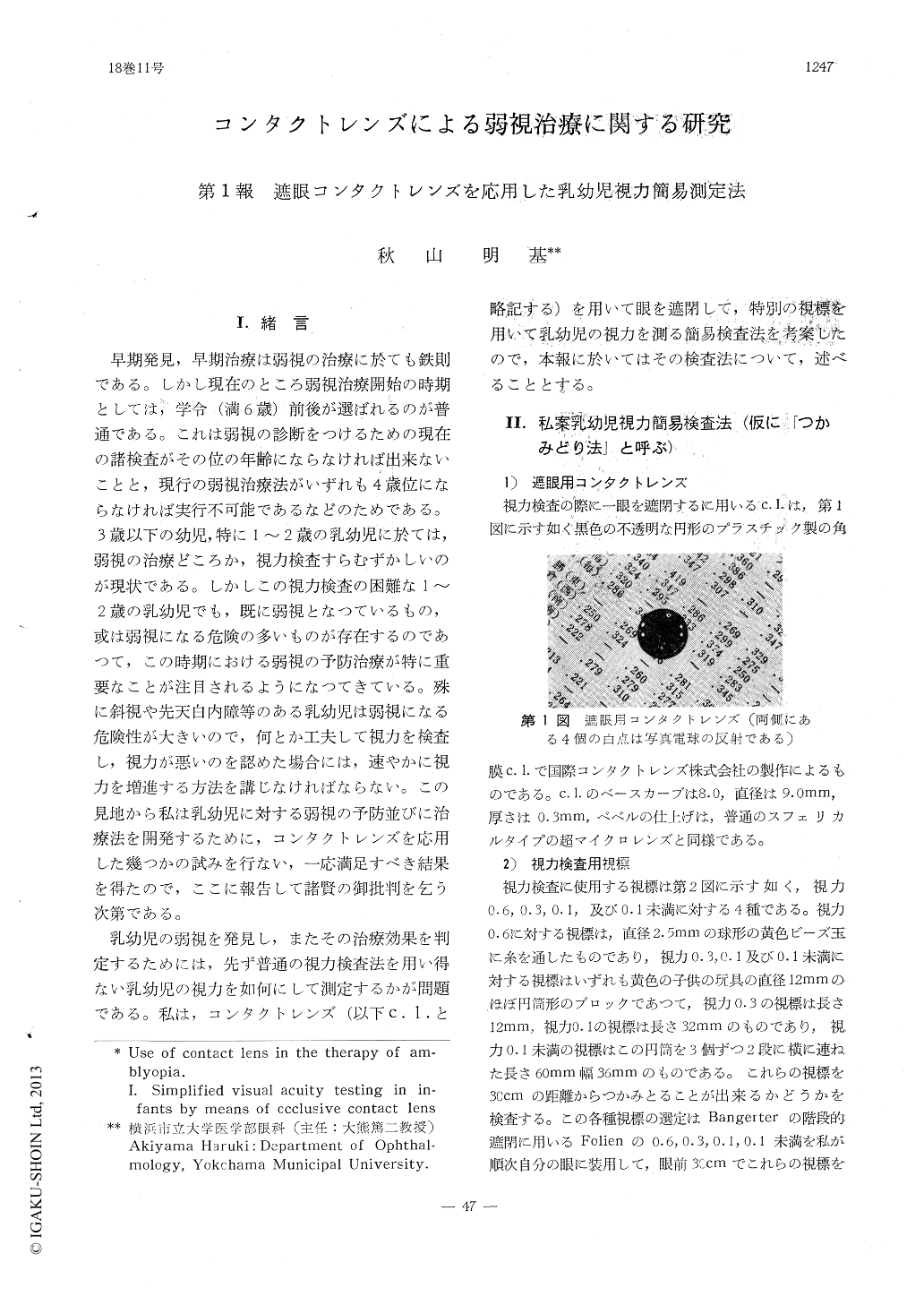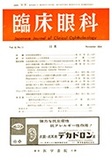Japanese
English
- 有料閲覧
- Abstract 文献概要
- 1ページ目 Look Inside
I.緒言
早期発見,早期治療は弱視の治療に於ても鉄則である。しかし現在のところ弱視治療開始の時期としては,学令(満6歳)前後が選ばれるのが普通である。これは弱視の診断をつけるための現在の諸検査がその位の年齢にならなければ出来ないことと,現行の弱視治療法がいずれも4歳位にならなければ実行不可能であるなどのためである。3歳以下の幼児,特に1〜2歳の乳幼児に於ては,弱視の治療どころか,視力検査すらむずかしいのが現状である。しかしこの視力検査の困難な1〜2歳の乳幼児でも,既に弱視となつているもの,或は弱視になる危険の多いものが存在するのであつて,この時期における弱視の予防治療が特に重要なことが注目されるようになつてきている。殊に斜視や先天白内障等のある乳幼児は弱視になる危険性が大きいので,何とか工夫して視力を検査し,視力が悪いのを認めた場合には,速やかに視力を増進する方法を講じなければならない。この見地から私は乳幼児に対する弱視の予防並びに治療法を開発するために,コンタクトレンズを応用した幾つかの試みを行ない,一応満足すべき結果を得たので,ここに報告して諸賢の御批判を乞う次第である。
乳幼児の弱視を発見し,またその治療効果を判定するためには,先ず普通の視力検査法を用い得ない乳幼児の視力を如何にして測定するかが問題である。
A method is described for the visual acuity assessment in infants by applying opaque con-tact lens as occluder.
While one eye is occluded by wearing black contact lens of corneal type, the examinee is allured to grasp a toy placed before him. The visual acuity is graded into 4 categories ac-cording to the type of the toy recognized. As the method neither requires preliminary exer-cise on the part of the patient nor is cum-bersome, it is regarded to be a practical one which satisfies the usual clinical requirements and which is expected greatly to facilitate early detection of visual impairment in in-fants.

Copyright © 1964, Igaku-Shoin Ltd. All rights reserved.


